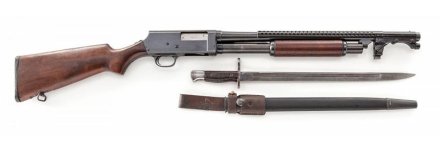I've owned two M1As over the years. The first was a mostly military parts early Springfield armory Supermatch M1A. I bought it from the Ziebach county Sheriff who had been using it as a patrol rifle unit, he figured out it was a bit much.
I used it in National match competition and with hand loaded 168 gr SMKs is was a 3/4 MOA rifle. With issued M852 Match ammo it was about 1.25 MOA. With issued M118 ammo, it really depended on the ammo. Older lots of M118 were 1.5 MOA, while the newer lots were normally 2-3 MOA and totally uncompetitive, but that was the ammo's fault, not the gun (*keep that thought in mind for a few minutes). The quality of the 173 gr bullets used in M118 declined sharply as Lake City's tooling for it got tired.
I eventually sold it to another competitor to fund my switch to an AR-15 math rifle. I've kicked my self ever since as it would be about a $4K rifle now.
My second M1A is a standard model with no bells and whistles, standard barrel, non glass bedded, and non unitized gas system. I did however install a National match front sight as well as a rear sight hood and then accurized the rear sight. (That basically involves turning the sight boss to allow room for a spring to remove hysteresis in the windage, glass bedding the rack to eliminate play, and tweaking the cover a bit to remove the fore and aft rocking of the sight body.)
With handloaded 168 gr SMKs it will shoot down around 1.5 MOA. Not quite enough to be competitive in National match at 600 yards, but darn close.
With decent 150 gr M80'esque handloads using Hornady 150 gr FMJ bullets it's still a solid 2 MOA rifle.
I've also shot a variety of M80 ball loads in it including US and Australian, as well as Mag Tech and Privi Partisan M80 commercial loads. Accuracy varies from 3 to 4 MOA which was about par for the M14 with M80 ball.
*Remember my comment about the early SA Supermatch shooting poorly with substandard ammo? I suspect that's the root cause of many of the accuracy complaints about the standard M1A rifles. Feed it military ball grade ammo and you get military ball grade accuracy.
——
I also owned a few FALs in both inch and metric configurations and while I loved the handling and the adjustable gas system, accuracy was never better than 3-4 MOA and At eventually turned them into a lot more money than I paid for them.
I also had a HK91 and while it was very well made and very accurate (it's a battle rifle that really only needs a scope and match ammo to fill the sniper role), it felt both longer and heavier than it actually was, and it was in fact pretty heavy already. It was also very hard on brass and the roller lock system is designed for very narrow ranges of recoil impulse and pressure curves. Too much recoil or too slow a powder and it unlocks with excessive chamber pressure, throws the brass into the next county, and leaves striations that are deep enough to render the brass non reloadable. I turned it into *a lot* more money than I paid for it.
——
I still have a BM-59 along side my M1A and my M1 Garand and quite frankly if I needed a battle rifle I'd pick the BM-59. It's as accurate as the M1A but much nicer to shoot. The muzzle device actually works to reduce recoil, the bipod is actually pretty practical and it's a bit handier than the M1A.
——-
However for home defense, I used an AR-15 in 9mm - a braced pistol with an 8.3" barrel. It's been superseded by an MP5. The advantage of a 9mm carbine or braced pistol with a 8-10" barrel is greatly reduced muzzle flash and muzzle blast (down around 117 dB compared to 150 dB for a 4" 9mm pistol) which makes it a lot less ear damaging in confined spaces.
——
I have a few Mini 14s and they are great little rifles to have in the truck or for general purposes outdoors activities, but like the AR-15 in .223 the muzzle blast is atrocious indoors - on the order of 155 dB.
——-
I also own a few M1 carbines. They were designed as personal defense weapons and they still do that job pretty well.



